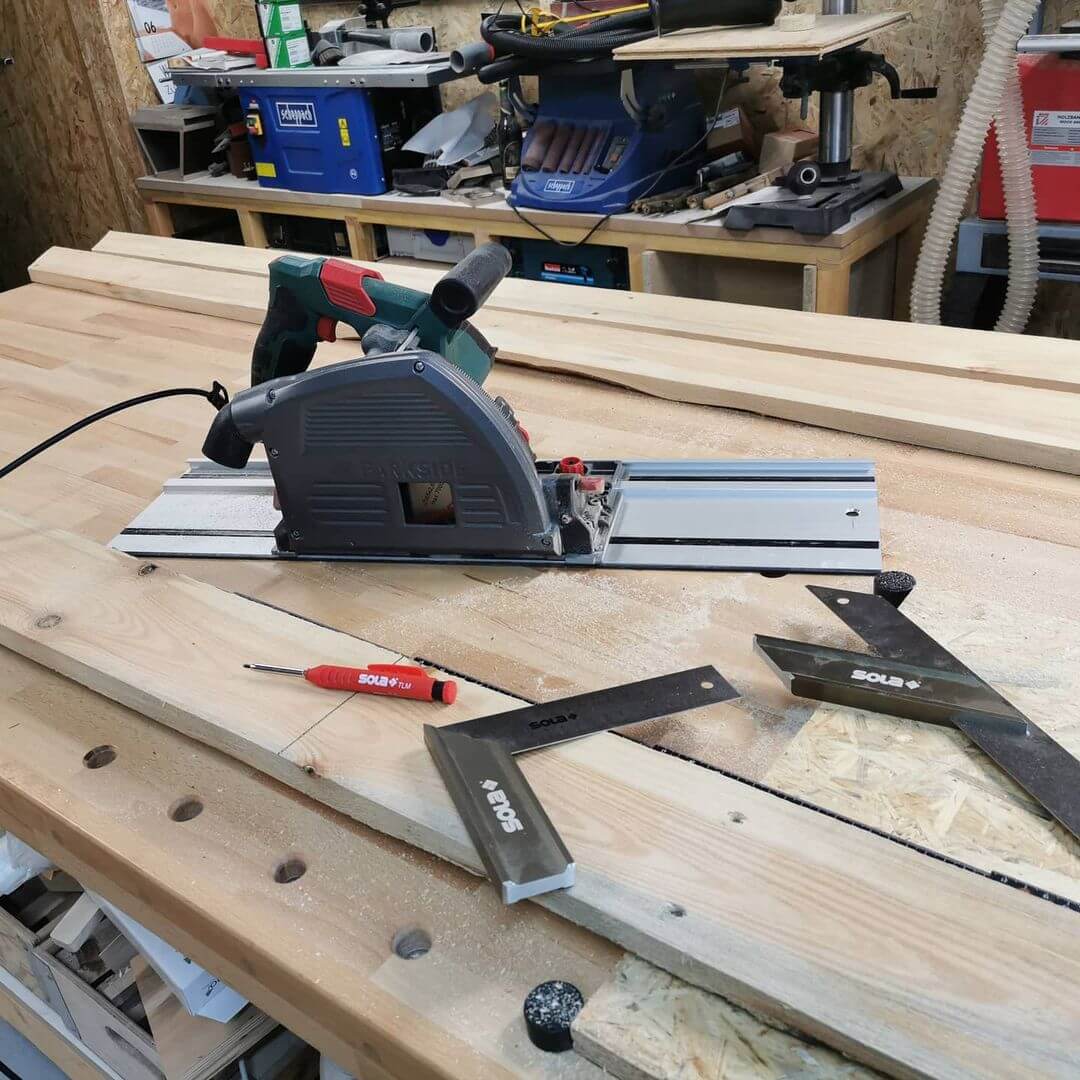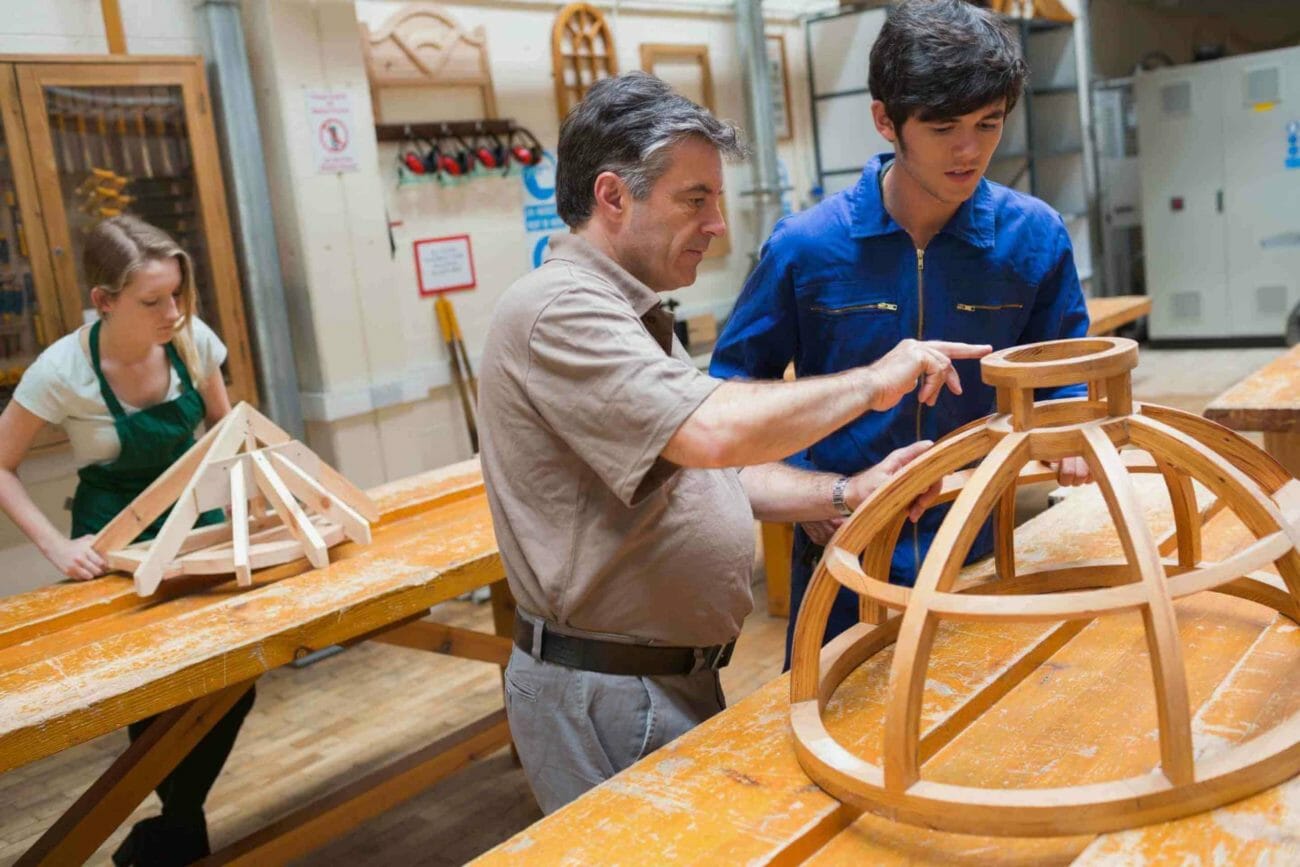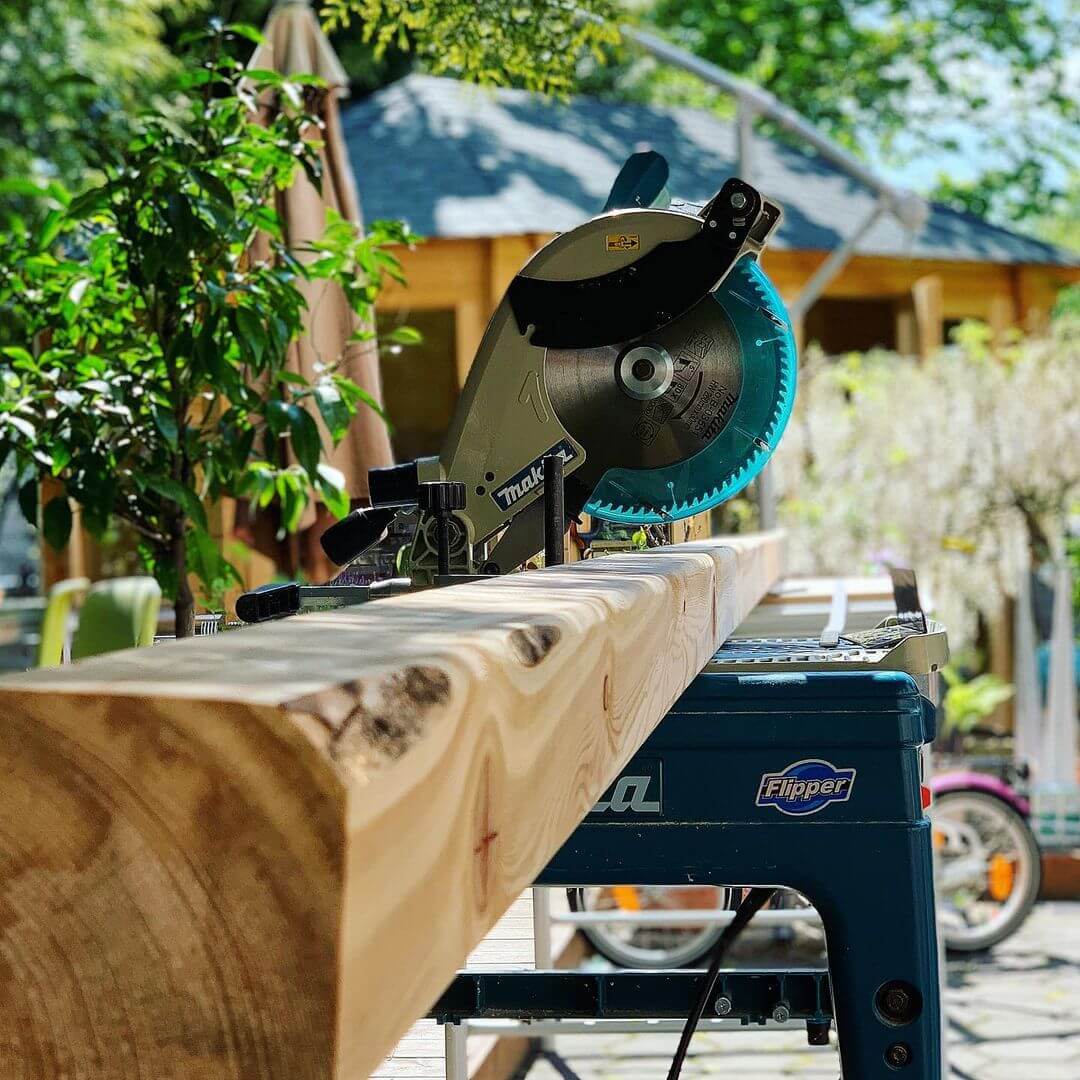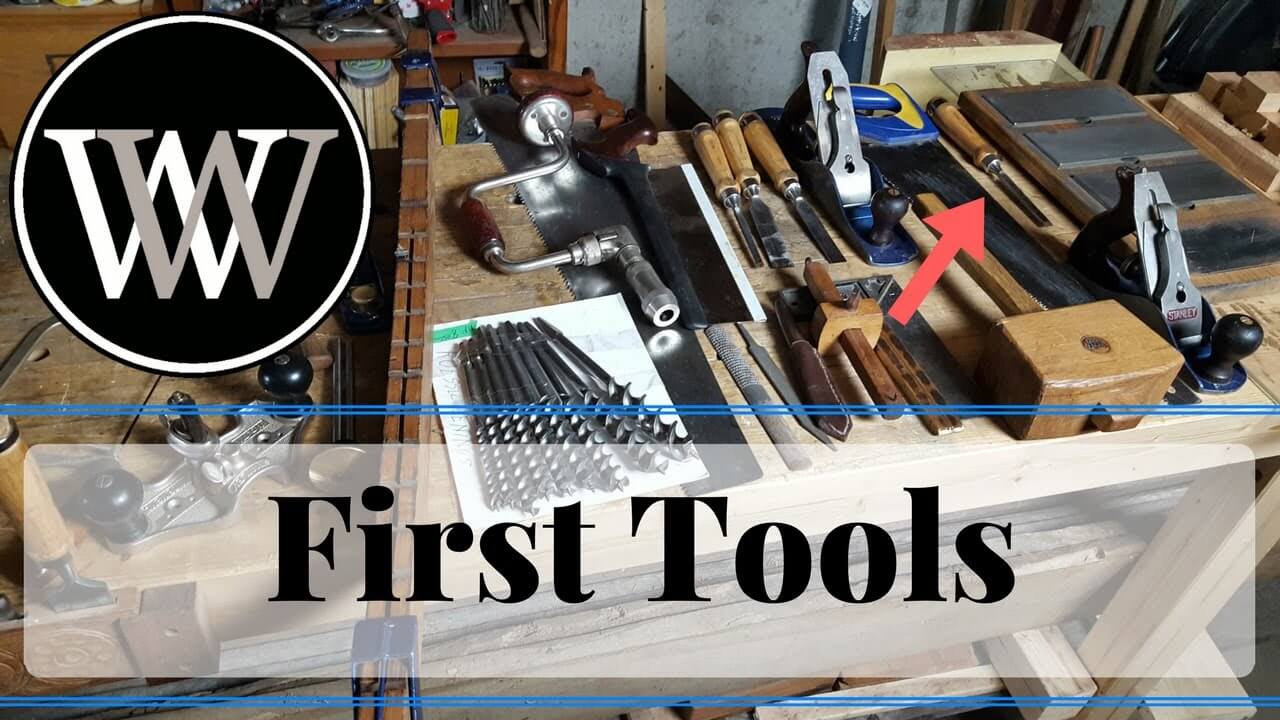How to Get Into Woodworking as a Hobby
Have you ever wanted to design and build something incredibly unique and cool out of wood? Well, you’re not alone.
Woodworking is a hugely popular pastime in the United States, with over a million professional woodworkers running businesses within the industry.
Oh, and that’s not to mention the other millions of eager individuals like you and me who are avid woodworking enthusiasts looking to master this rewarding craft.
Learning woodworking from the right authorities within the space can be difficult if you don’t know where to go.
Right now, we want to talk about how to get into woodworking without wasting your precious time or money. So let’s get to it and kickstart your woodworking journey the right way.
Getting Started In Woodworking
The number one thing you need to avoid in the woodworking industry when getting into woodworking is scammers.
How does one do that? Well, steer clear of anything related to Clickbank, and definitely hit the back button when doing research on the internet if you see anything related to Ted’s Woodworking.
While Ted’s Woodworking might seem legit at first glance, it’s actually one of the biggest scams on the internet.
If you’d like to read more about how and why Ted’s Woodworking is nothing but 16’000 plans of treachery and deception, check out our in-depth review of Ted’s Woodworking.
Now that we’ve gotten that out of the way and you’re aware of the widespread shenanigans within the online world of woodworking, let’s discuss some legitimate alternatives for learning woodworking.

Learn the Basics of Woodworking
Start by learning the basics of woodworking. You can find several woodworking books online that are made with beginners in mind.
Learning key skills as a woodworker allows you to boost your confidence.
The knowledge you acquire will serve as a building block for more complex projects you choose to tackle later. You will find more below when it comes to the many ways you can go about gaining this basic knowledge.
Woodworking Hand Tools & Power Tools You’ll Need
If this new endeavor isn’t career-related, I’d recommend you start small when it comes to purchasing tools and equipment.
Considering how long the average person sticks with a new hobby, I wouldn’t go and empty the savings account or load up the credit card with power tool purchases until you’re fully committed.
Although, if you are interested in buying a few essential woodworking tools to get started, here’s a list of recommended tools every woodworker must own.
Keep in mind that while this woodworking tools list is priority-based, the tools you’ll need will likely depend on the woodworking projects you’re attempting to build.
Either way, you should be prepared to spend a few dollars to fit out a highly functional workshop. Woodworkers will typically house hand tools, power tools, and equipment like air compressors and extraction fans.
Simply put, if you want to tackle a larger-scale woodworking project, you will use power tools as a circular saw, miter saw, table saw, power drill, and other tools like hand planes.
Tools Every Woodworker Needs
Always buy the tools best suited for your workspace and the type of woodworking projects you will have. The biggest mistake most beginner woodworkers make is purchasing the wrong tools. It can lead to overspending.
You should also avoid buying any of these tools secondhand. Often, you will find that they break after just a few uses. So, invest in high-quality tools to save time and money in the long run.
Hand Tools
Power Tools
Yeah, sure, there are a bunch more tools we could recommend for your home workshop. Although, if you’re a beginner, that’s about as far as I’d go for now as the above would be quite the financial investment.
Getting complex power tools to streamline your woodworking operation like; band saws, scroll saws, or even a lathe can be highly beneficial, although not essential. While this list is a good guideline for beginner woodworkers, it’s certainly not a woodworking gospel.
Get what you need, when you need it, and build a tool collection as your skillset progresses. Speaking of building, I’d recommend building your own woodworking workbench instead of buying one, as it’s a great first woodworking project.
Always set a budget as a beginner woodworker. Make sure your budget allows for the basic hand tools you need for woodworking, and try to keep this expenditure under $500. You can also research some great and affordable power tools for under the $1000 mark.
Lastly, you can always hire some more expensive power tools instead of buying them if you’re trying to conserve funds.
Getting to Know Your Measuring Tools
The tools don’t stop with our list above either. You should also get to know the various measuring tools you will need for your future wood-crafting projects.
- Dividers and Compass: These are needed so you can take more precise measurements. You can purchase them online or from your local hardware store. They can be used for scribing arcs on wood. When purchasing dividers, get a pair of smaller 3-inch dividers and a pair of larger 9-inch dividers.
- Marking Gauge: This is a tool you need to transfer your measurements. Consider a marking gauge with a lock to prevent the gauge from slipping and causing you to lose measurements. It should also have cut or slice features which will prove to come in handy.
- Measuring Tape: We included a measuring tape on our list of essentials, but you can also purchase a folding ruler to take rough measurements. Ideally, we’d recommend a 25-foot (7.5m) tape.
- Sliding Bevel: This is another important must-have measuring tool. It allows you to scribe angles on your wood project. It can also be used to lay out joints. It has a movable blade that can be fixed at an angle simply by tightening a screw.
- Scratch Awl: You can use this to make a pattern line on solid objects. There is a sharp point you can use to locate and align holes. It can be used with a chisel or hand saw when making joints.
It also doesn’t hurt to start collecting scrap wood as you go along, so you don’t have to invest even more money into beginner woodworking projects.
Scrap wood is perfect for practice in your wood shop and can be used as you gain experience with your different woodworking hand tools and power tools.
Start Woodworking With a Shop Class
Alright, so if you’re still a young one, and you already have a hankering for getting into woodworking, there’s probably no better way to do so than to start with shop class in your local high school.
Sure, you might be tempted to take art or drama, but woodworking is so much more rewarding. You get to build stuff with your hands; then, when it’s finally done, you see your finished products firsthand.
Some cool high school woodworking projects usually involve making birdhouses, model homes, little CO2-powered race cars, and other simple stuff.
Okay, so if you are already an adult and out of school, this probably is not an option.
However, it’s always best to start early with this kind of thing, so if you’re still in school, it’s definitely recommended that you get a leg up on the competition and get started ASAP.
Take Some Local Woodworking Classes
If you are already out of high school and you’re keen on getting started in woodworking, you can always take a local woodworking class. Now, woodworking classes may not be all that easy to find, and when you do, they probably won’t be cheap to attend.
However, with that being said, attending a local woodworking class allows you to get to know like-minded people that have the same interests as you, which is already a bonus.
The big bonus here is that real woodworking classes, not those taught in schools, usually have a knowledgeable, dedicated, and excited teacher who is more than happy to share his or her knowledge and skills.
It’s a great way to find out just how deep you want to dive into the world of woodworking.
The cool part about woodworking classes is that they come in many shapes and sizes, for beginners who want to make birdhouses and for more advanced woodworkers who want to make cabinets and full-size dining room tables.
The fact of the matter is that these classes provide great stepping stones that bring you from one level of skill to the next and the next until you are a woodworking pro.
It’s always good to start easy with a teacher who can help you, inspire you, and guide you to bigger and better things.

Meet The Woodworking Community
What is usually true for all sorts of things like woodworking and crafts, is that it helps to know the other people in that community, and yes, this goes for woodworking too.
When you get to know other people in the woodworking community, it will help to provide you with new and fresh ideas about what can be made out of wood.
At the same time, it provides a way to learn about the other people in the community, how they got started, and where they get their inspiration.
Moreover, communicating with other people in the woodworking community will allow you to learn new skills that you might have never learned otherwise.
Heck, you might even make a friend who is willing to let you use their woodshop and all of their fancy tools.
Simply put, it is always useful to know the other people who engage in woodworking, whether big-time or small-time. It’s always more fun when you have other people with the same interests as you.
Go To A Woodworking Sale or Antique Shop
Something which many people seem to struggle with when it comes to getting into woodworking is that they just don’t know what they would like to make.
If you have issues deciding what kind of projects you would like to make, go to a flea market, another woodworking shop (the sales floor), or even an antique shop.
No, you don’t want to steal designs, but it never hurts to take a look at the competition, per se, and get an idea of what possibilities are out there for you. Just go out and take a look, get some ideas, and find what floats your boat the best.
Good Old YouTube
Alright, so woodworking is a purely manual job or hobby, and it’s something that is done with your hands.
Woodworkers, real ones, usually don’t appreciate too much technology being thrown into the mix. However, as a part of the new generation of woodworkers, it does make sense to take advantage of all technology and resources at your disposal, and yes, this includes YouTube.
The fact of the matter is that YouTube is probably one of the best learning resources out there.
Go on YouTube, and you will find instructional videos on literally everything to do with woodworking.
You can find people showing you how to make picture frames, utensils, coat racks, kids’ toys, dog houses, large furniture, and everything in between. It’s, therefore, a great way for you to learn how to build individual items with step-by-step instructions.
The problem with woodworking is that it can often be very complicated and confusing, especially without a physical teacher. However, a YouTube-based teacher can be just as helpful.
Another useful aspect of YouTube, in relation to woodworking, is that you can find tons of product reviews there.
If you have no idea what kind of woodworking machinery you should buy, watching some how-to videos, tips videos, and product review videos will help get you started when it comes to buying the right tools and machines.
Consider watching this YouTube video by Steve Ramsey. He highlights 18 things every beginning woodworker should know.
Learn from the Experts
If you are interested in making an income in woodworking, then you should learn from the experts.
Learning to make more than $10,000 a month in woodworking can seem intimidating for a beginner. However, you can learn how to get started when you take advice from experts.
Take Small Steps
When just starting, it is okay to take small steps. Once you have taken the time to acquire the right tools and equipment, you can begin to practice your basic woodworking skills.
Beginners should avoid more complex wood projects until the basics are nailed down.
Trying to tackle more complex projects before you are ready can cause you to become frustrated, ultimately losing interest in your new woodworking hobby.
Instead, take small steps. Learn as you go and focus on mastering your basic woodworking skills.
Just Get To It
Sometimes, with something like woodworking, it’s hard to get into it until you start doing it.
Sure, it’s fine to talk to the community, get ideas from other places, or even take some classes, but until you start doing it on your own, you really won’t know just how serious you are about it.
Maybe the best way to go about it is to rent a woodworking shop or even get some basic tools for yourself, get some wood, and see how building something goes.
Who knows, you might find that you have a knack for it. With many hobbyists’ pursuits, the best way to really get into woodworking (or anything else) is to simply start doing it.
Learning by purely doing is not a bad way to go, as long as you monitor and correct your technique as you progress. Picking up something like a wood router and practicing on some offcuts can be a bit of fun. Plus, you get to find out if woodworking is really for you without over-committing.
In Conclusion
Alright, so that’s about it. The bottom line is that if you really want to get into woodworking, you will find a way to do it.
Whether you get to know the woodworking community, take a look around, take some classes, or even use YouTube videos to your advantage, you’ll ultimately have to make the decision yourself.
There are many ways to get into this fine line of work and make a really good living as a woodworker. If you’re producing quality woodworking projects that are already in demand, you’ll find that people will pay more for authentic craftsmanship.
And if you’re a little less ambitious about your new woodworking venture, there is more than enough room for hobbyists, and woodworking communities will welcome you with open arms.
So, get some wood, pick up some tools, use the correct PPE gear, and see how it goes for the first 30 days or so. You might be pleasantly surprised at what you can craft after a couple of months.





